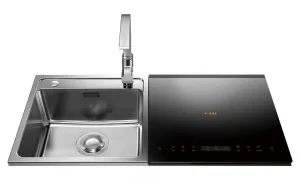A root canal is a dental operation used to save teeth that are badly damaged or diseased. The diseased pulp must be removed, the root canals must be cleaned, and the canals must be sealed to stop the spread of infection. Root canal treatment methods and technology have made considerable strides over time, giving patients more productive and relaxing experiences.
The most recent developments in Single sitting RCT will be covered in this blog, along with information that patients should be aware of.
Gentle and Precise Diagnosis
The identification of root canal issues has been transformed by advancements in dental imaging technologies, like cone-beam computed tomography (CBCT) and digital radiography. With the use of this equipment, dentists may take in-depth, three-dimensional photographs of the tooth and its surroundings, facilitating more precise diagnosis and treatment planning. Dentists can determine the severity of an illness, find hidden canals, and formulate the best treatment strategy with an accurate diagnosis.
Precision and Safety with Electronic Apex Locators
For a procedure to be effective, it is imperative to estimate the working length of the tooth’s root canal accurately. To determine the working length, electronic apex locators (EALs) have taken the role of conventional radiography techniques.
These portable instruments correctly locate the root apex using electrical resistance or impedance measurements, guaranteeing that the whole canal is fully cleansed and filled. EALs reduce the need for repeated X-rays, minimizing radiation exposure to patients while simultaneously improving treatment accuracy. So, check if the clinic offers the utmost safety when you are searching for “single sitting RCT treatment near me.”
Enhanced Efficiency with Rotary Instruments
Historically, stainless steel files were used to manually clean and shape root canals. However, the operation is now more accurate and efficient because of recent developments in rotary instrumentation. Dentists can more easily cross the canals because of the flexible nickel-titanium alloys that make up rotary tools.
These instruments are electrically powered, which cuts down on root canal treatment time and lowers the possibility of instrument breakage. The success rate of the procedure is increased by the smoother canal walls produced by the employment of rotating devices.
Improved Disinfection Techniques
The efficacy of single-sitting RCT treatment depends on effective disinfection. Traditional disinfection methods rely on irritants such as sodium hypochlorite, but more recent innovations have brought newer irrigants and procedures. Utilizing laser technology is one such method.
By removing germs from the root canal system, even in difficult-to-reach places, laser-assisted disinfection can increase the treatment’s overall success rate. Additionally, it has been shown that more recent irrigants, including ozone and chlorhexidine, have stronger antibacterial characteristics, which improve disinfection even more.
Minimally Invasive Endodontic Surgery
Getting conventional root canal treatment in Kolkata might not always be enough to save a tooth. It is now feasible to undertake minimally invasive operations like apicoectomy or root-end surgery because of recent improvements in endodontic surgery techniques. In order to stop reinfection, the contaminated tissue from the root apex must be removed and sealed. Patients who undergo minimally invasive endodontic surgery benefit from shorter recovery times, less pain following the procedure, and better retention of their original tooth structure.
Conclusion:
The method dentists identify and treat diseased teeth has changed as a result of advancements in root canal therapy, giving patients better, more successful results. These innovations have completely changed the field of endodontics, from enhanced diagnostic imaging to cutting-edge cleaning methods and less invasive surgery.
To guarantee you receive the most cutting-edge and efficient care possible if you need a root canal, it’s crucial to choose a qualified and experienced dentist who keeps up with the most recent developments. Keep in mind that a root canal doesn’t have to be unpleasant; it may be an effective way to save your tooth and improve your oral health.







































